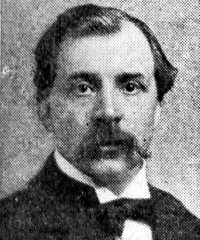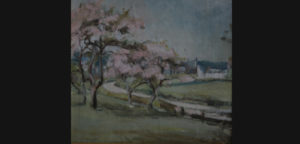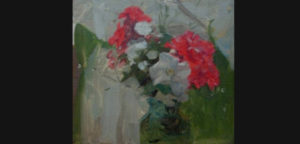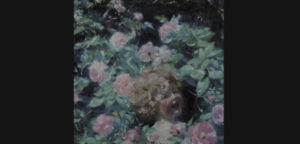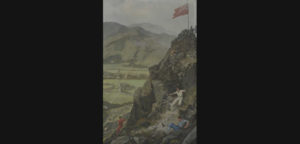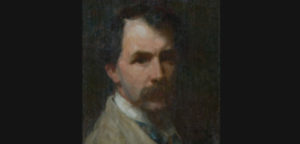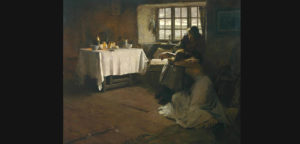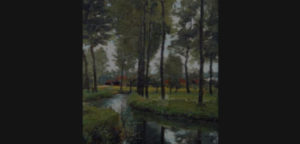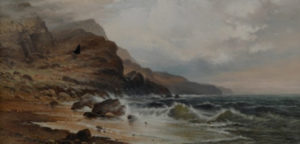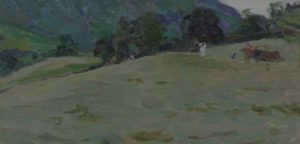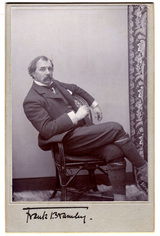Frank Bramley was born on May 6, 1857 in Sibsey, Lincolnshire.
1857 - 1915
Frank Bramley
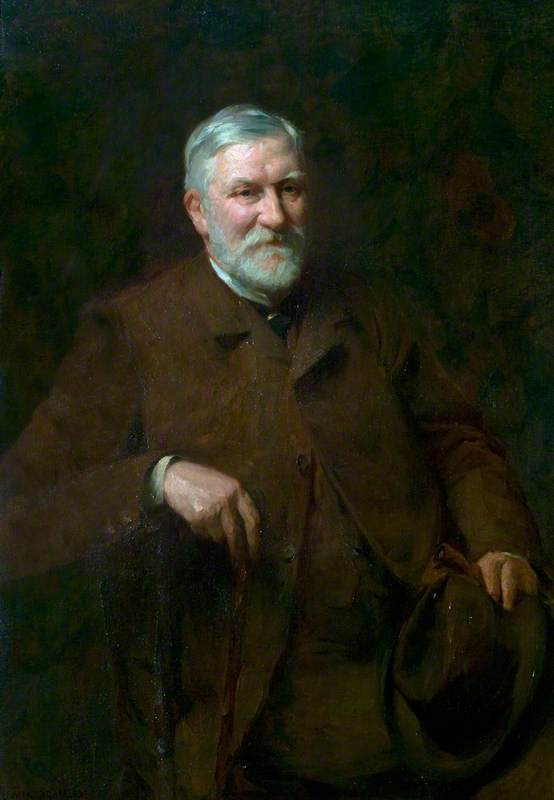
description
An English Post-impressionist artist, one of the major representatives and “leading figures” of the Newlyn School art group, a co-founder of the New English Art Club.
Bramley received his education at the Lincoln School of Art and the Royal Academy of Fine Arts. His teacher was a famous Belgian academic artist, Charles Verlat.
The works of Frank Bramley were exhibited for almost 30 years (since 1884) at the annual exhibitions of the Royal Academy of Arts and acquired by the best galleries in the UK.
Key ideas:
– Unlike other members of the Newlyn school, Bramley specialized not in plein air painting, but in genre scenes depicting interiors. He set himself a task of harmoniously combining the natural and artificial lightning. Preferred to work more in the studio than outdoors.
– Another feature of Frank Bramley was the use of the “square brush” technique in the work, when the artist takes a flat brush to make strokes on the canvas in the form of a mosaic pattern. A vivid example of the use of this technique can be his painting “Domino!”.
– The painter put, along with narrative, a strong emotional content in his paintings. Together with aesthetic appeal and tonal harmony, emotion makes genre works truly alive and makes portraits deep.
– From the 1890s, the palette became brighter and lighter; the processing of paints became looser, while more saturated – like in the painting “Portrait of Helen Chalmers”, 1908. The themes of Bramley’s works are portraits and village genre paintings (traditional scenes from the life of ordinary villagers) and, more rarely, vivid landscapes such as “Thislemere Lake in Cumberland”.
1857
1873
1879
1882
1884
1885
1888
1891
1894
1911
1915
The birth of the artist
Started studying at the Lincoln School of Art
Started studying at the Lincoln School of Art.
Entered the Royal Academy of Fine Arts
Entered the Royal Academy of Fine Arts, where his teacher was famous Belgian academic artist Charles Verlat.
He lived in Venice
He lived in Venice and then moved to the port city of Newlyn (Cornwall region), where he joined the colony of artists.
Presented his work at the annual exhibition of the Royal Academy of Arts
Presented his work at the annual exhibition of the Royal Academy of Arts. Later he exhibited works there until 1912 (almost 30 years).
Became one of the co-founders of the New English Art Club
Became one of the co-founders of the New English Art Club.
His fame came
His fame came, brought by the work “Hopeless Business”, acquired for the Tate Art Gallery.
Married his classmate Catherine Graham from Huntingstyle
Married his classmate Catherine Graham from Huntingstyle.
Was elected a corresponding member of the Royal Academy of Arts
Was elected a corresponding member of the Royal Academy of Arts.
Became a full member of the London Academy
Became a full member of the London Academy, exhibited his paintings in Paris and was awarded a gold medal at the official Paris salon.
The death
He died on August 9, 1915 in Halford Hill, the non-metropolitan county of Gloucestershire, the United Kingdom.

